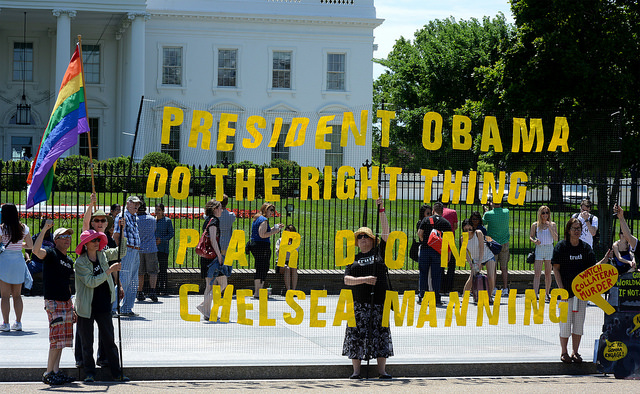
Barack Obama issued 78 pardons and 153 commutations before leaving office, including commuting the sentence of Chelsea Manning. While commutations shorten the sentences of incarcerated individuals, but do not alter their criminal record, pardons remove the conviction from the individual’s record. Obama’s latest string of clemency decisions brings his administration’s total to 1,324, the majority of which were commutations.
Research on federal executive clemency shows that rates of clemency are highest when Democratic presidents are in power, when crime rates are lower, and during periods of war. Legal research also highlights variation between states, with certain governors utilizing clemency measures more than others, though not necessarily along party lines. While executive clemency was once a practice commonly employed by U.S. presidents, its use has declined in recent decades. This decreased use of executive clemency has coincided with a sharp increase in arrests, both of which have contributed to the substantial rise in incarcerated individuals across the U.S.
- Bruce Western. 2006. “Punishment and Inequality in America.” Russell Sage Foundation.
- Margaret Colgate Love. 2010. “The Twilight of Pardon Power.” The Journal of Criminal Law and Criminology 100(3): 1169–1212.
- William M.Landes and Richard A. Posner. 2009. “The Economics of Presidential Pardons and Commutations.” The Journal of Legal Studies 38(1): 61–88.
- Rachel E. Barkow . 2009. “The Politics of Forgiveness: Reconceptualizing Clemency.” Federal Sentencing Reporter 21(3): 153–59.
Scholarship also hints at who is likely to receive a commutation or pardon. Analyses of death sentences shows that women, youth, the elderly, and those who have spent a significant amount of time on death row are more likely to have their death sentences commuted. Additionally, death penalty commutations are more common among governors who are not returning to office (lame duck) and when the death row population is particularly old. However, even though female prisoners are more likely to receive clemency, recent qualitative investigations of commutation hearings suggest that women encounter a systemic gender bias when applying for a pardon or commutation.
- Laura M. Argys and H. Naci Mocan. 2004. “Who Shall Live and Who Shall Die? An Analysis of Prisoners on Death Row in the United States.” The Journal of Legal Studies 33(2): 255–82.
- Carol Jacobsen and Lora Bex Lempert 2013. “Institutional Disparities: Considerations of Gender in the Commutation Process for Incarcerated Women.” Signs 39(1): 265–89.

Comments